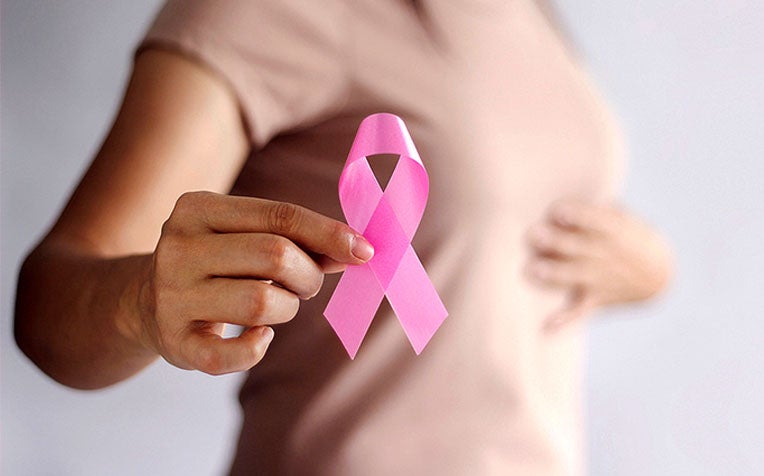
After breast cancer surgery, it is important to take proper care of surgical drains and perform the rehabilitation exercises to ensure good recovery.
Caring for surgical drains and rehabilitation exercises are the two most challenging aspects that breast cancer surgery patients need to learn following operation.
"It is not easy to learn these new skills directly after breast cancer surgery but yet they are so crucial for recovery. Thus we decided to create these videos which patients can assess at their fingers tips. They can refer to these videos easily when they are taking care of their surgical drains at home and when performing the exercises," explained Dr Lim Sue Zann, Consultant from the Department of General Surgery at Singapore General Hospital (SGH), a member of the SingHealth group.
"Hopefully they (patients) will feel motivated and assured when performing these tasks in the comfort of their home," she added.
How to care for surgical drains
How to care for blake drain
How to care for prevac drain
How to care for unoplast drain
Common questions about surgical drains
1. What is a surgical drain?
A surgical drain is essentially a tube which is inserted into the operated site to allow fluid to be removed from the body following surgery. It is normal for body to secrete fluid into the operated site during the healing process. But if these fluid accumulate in the body, it can lead to infection and impedes healing.
2. What do I need to do when I go back home with a surgical drain?
Each drain is usually connected to a container which stores the fluid removed from the body.
If you have a Blake or Unoplast drain, you will need to empty the fluid from the container twice a day and record the volume of fluid discarded. Our staff will need to know the volume of fluid discarded daily to decide when to remove the drain.
If you have a Prevac drain, you will only need to change the container when it is full. But you will still need to record down the amount of fluid in the container daily.
Always make sure the site where the drain is connected to the body is always clean and dry to prevent infection.
3. When should I learn how to take care of the drain?
If you feel well after surgery, you will be taught on steps to take care of the drain the next day. Our staff will demonstrate these steps in person to you before you are discharged.
4. Why are there 3 types of surgical drains?
The decision on the type of drains is based on surgeons’ preference and patients’ physical ability level to manage the drain at home.
5. Is it dangerous for me to manage my surgical drain at home?
No. It is safe and easy to manage your surgical drain at home as long as you follow the instructions.
6. What would happen if I do not take care of my surgical drain?
Excessive fluid may accumulate in the operated site if you do not empty/change your drain containers. This may lead to infection requiring antibiotic treatment or even invasive intervention.
Rehabilitation exercises and arm massages to do after breast cancer surgery
Arm and shoulder exercises
Common questions about rehabilitation exercises for breast cancer surgery
1. What is the purpose of these exercises?
They are a group of exercises focusing on improving the mobility of the shoulder and strengthening the arm muscles. It consists of simple steps which can be done anytime and anywhere.
2. When should I perform these exercises?
If you are well after surgery, you can start doing the exercises the next day. Our staff will demonstrate these exercises in person to you before you are discharged.
3. Who should perform these exercises?
This group of exercises are suitable for patients who had breast surgery especially those who had concurrent axillary (armpit) surgery.
4. Is it dangerous for me to perform these exercises following surgery?
No. It is safe to perform these exercises following surgery as long as they are done gently.
5. What would happen if I do not perform these exercises?
Patients may develop shoulder stiffness secondary to prolong limited movement of the arm and shoulder. When left alone it may lead to frozen shoulder and affect patients’ quality of life.
ARM MASSAGE
Common questions about arm massages for breast cancer surgery
1. What is the purpose of arm massages?
This series of arm massages aid lymphatic drainage in the affected arm following axillary clearance (total removal of lymph nodes under the armpit).
2. When should I perform this massage?
You may start to do this massage after your drainage bottle has been removed. Our therapists will demonstrate the steps of the massage and guide you at your first outpatient therapy visit.
3. Who should perform this massage?
This massage is essential for patients who had axillary clearance (total removal of lymph nodes under the armpit).
4. Is it dangerous for me to perform this massage following surgery?
No. It is safe to perform the massage following surgery as long as they are done gently.
5. What would happen if I do not perform this message?
You may develop lymphedema (accumulation of lymphatic fluids) in the arm which can lead to arm swelling associated with sense of heaviness and recurrent infection. This can significantly affect patients’ quality of life.
Ref: I23
How is Breast Cancer Treated: An Overview
Contributed by


















 Get it on Google Play
Get it on Google Play